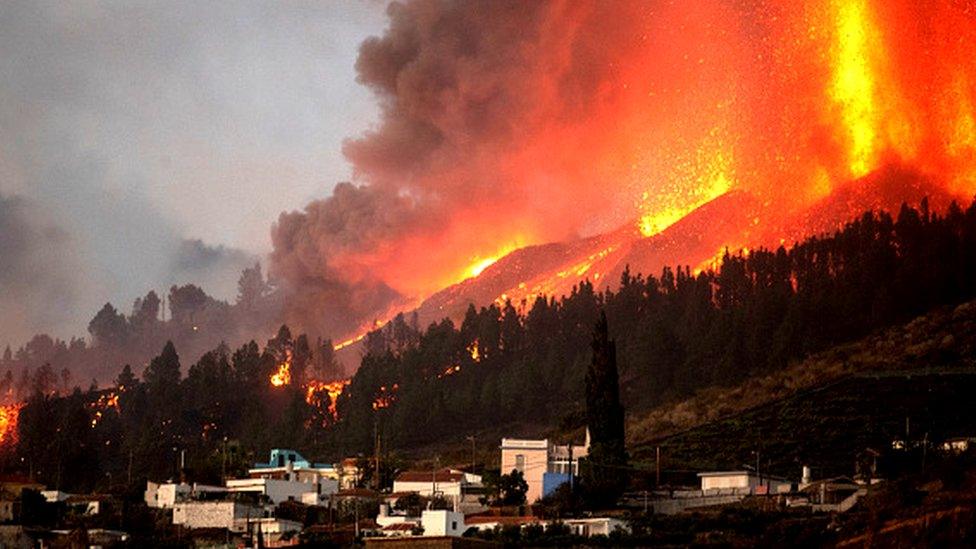La Palma volcano: Toxic gas fears as lava reaches ocean
- Published
Clouds of steam can be seen as scorching lava enters the Atlantic Ocean
Lava from an erupting volcano on Spain's La Palma island has reached the Atlantic Ocean, raising fears of toxic gases being released and explosions.
Clouds of white steam were seen rising as a red-hot current made contact with the water in the Playa Nueva area.
This could trigger a chemical reaction which can irritate the skin and eyes and affect breathing.
Hundreds of homes have been destroyed since the Cumbre Vieja volcano in the Canary Islands erupted on 19 September.
About 6,000 people have been evacuated, as the lava was engulfing houses, schools and some banana plantations.
On Wednesday the EU's Copernicus service estimated that the lava had had covered 267 hectares (2.7 sq km) and destroyed 656 homes on its way to the ocean.
The lava reached the ocean late on Tuesday, the Canary Islands Volcanic Institute (Involcan) tweeted., external Footage broadcast on local TV showed a river of lava pouring off a cliff into the water, triggering plumes of vapour and gas.
There are also fears that parts of the shoreline could now collapse, triggering explosions.
Allow X content?
This article contains content provided by X. We ask for your permission before anything is loaded, as they may be using cookies and other technologies. You may want to read X’s cookie policy, external and privacy policy, external before accepting. To view this content choose ‘accept and continue’.

Three coastal villages were earlier locked down in anticipation of the lava making contact with the water.
Residents on the western coast had been told to stay indoors and seal all doors and windows with tape and wet towels. The advice remains in force, but authorities have played down the threat posed by toxic gases.
"The eruption has not affected air quality, which is perfectly breathable," the La Palma Council said on Twitter.

A huge cloud of white steam has been rising from the area where lava has been flowing into the ocean
The Spanish government has declared La Palma - the most north-westerly island of the archipelago off the north African coast - a disaster zone, pledging financial support for all those affected by the volcanic activity.
Spanish Prime Minister Pedro Sánchez said he would go to the island to co-ordinate aid for the residents of La Palma.
The president of the Canary Islands, Ángel Víctor Torres, said streams of lava up to 600m (1,968 ft) wide had devastated the landscape in some areas.
The people of La Palma "have been cowering in fear with a tremendous sense of desolation" since the eruption began, the president told Spanish radio.
Last week, he had estimated the damage incurred by the eruption would exceed €400m (£346m; $466m).
The dangers of lava
When lava comes into contact with ocean water, it produces a gas plume known as laze - lava and haze.
Laze forms through a series of chemical reactions as hot lava boils the colder sea water.
"It creates a steam of hydrochloric acid, water vapour and bits of ash," science journalist and volcanologist Dr Robin George Andrews told the BBC when the volcano first erupted. "Obviously, it's not good to breathe in."
Laze plumes can cause eye, lung and skin irritation but should not be a problem if residents keep their distance, he said.

A Copernicus satellite image shows the eruption on the west slope of the Cumbre Vieja
Volcanic explosions were also possible, he added, because lava entering sea water creates "a pressure-cooker situation" that "might fling out volcanic debris".
There was an incident in Hawaii where a chunk of molten rock, known as a lava bomb, crashed into a tourist boat off Hawaii's coast in 2018, injuring 23 people.
Authorities have set up an exclusion zone around the lava, including in the sea, to keep people away from any potential danger.
Related topics
- Published30 September 2021
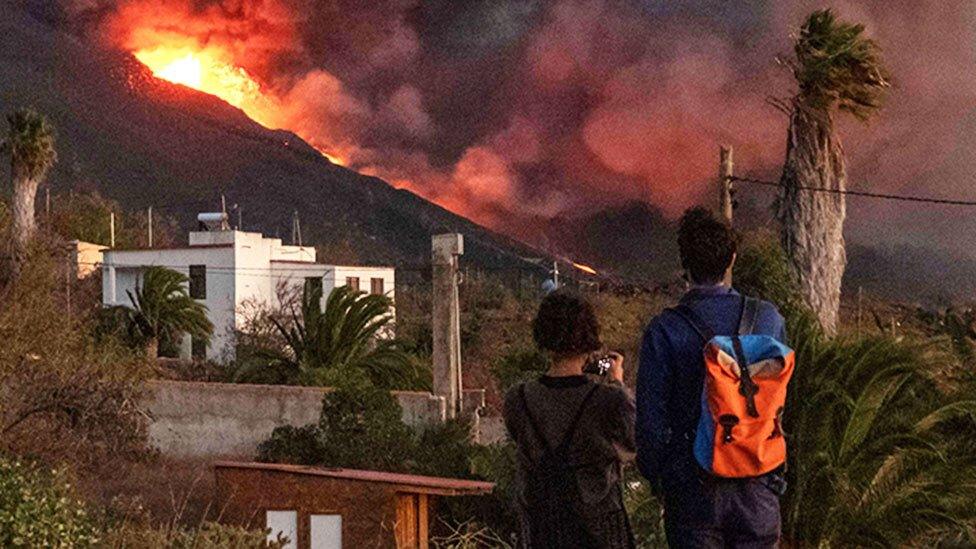
- Published22 September 2021
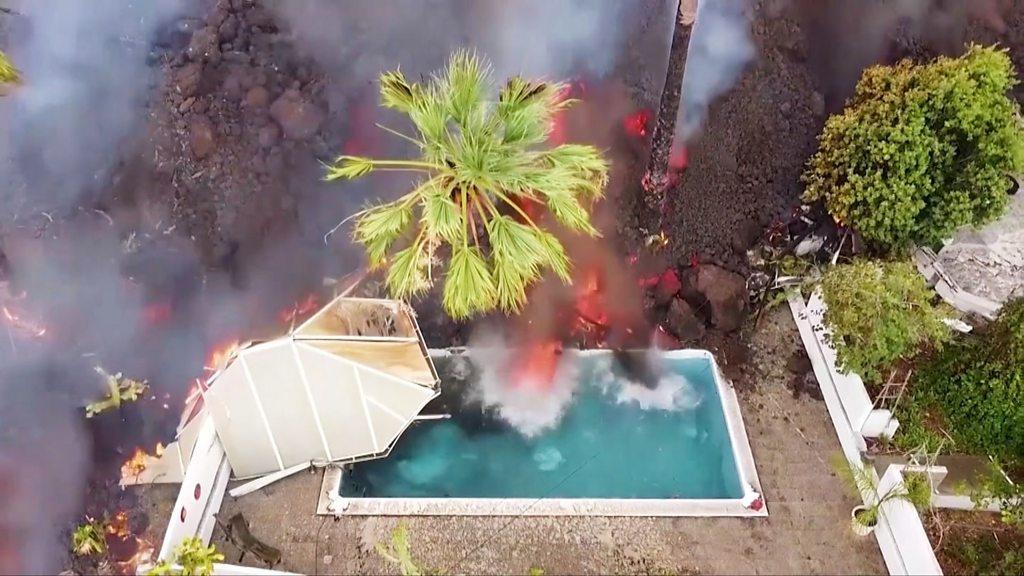
- Published20 September 2021
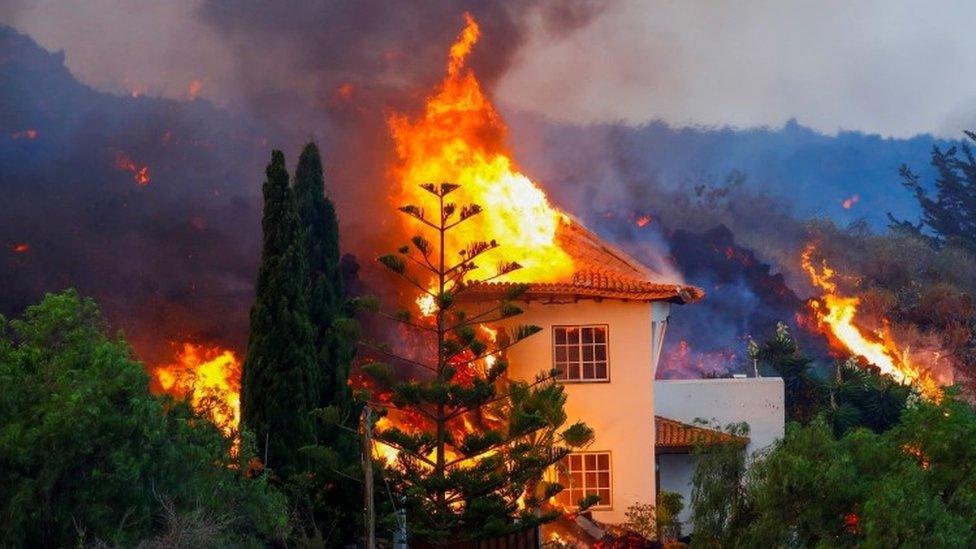
- Published23 September 2021
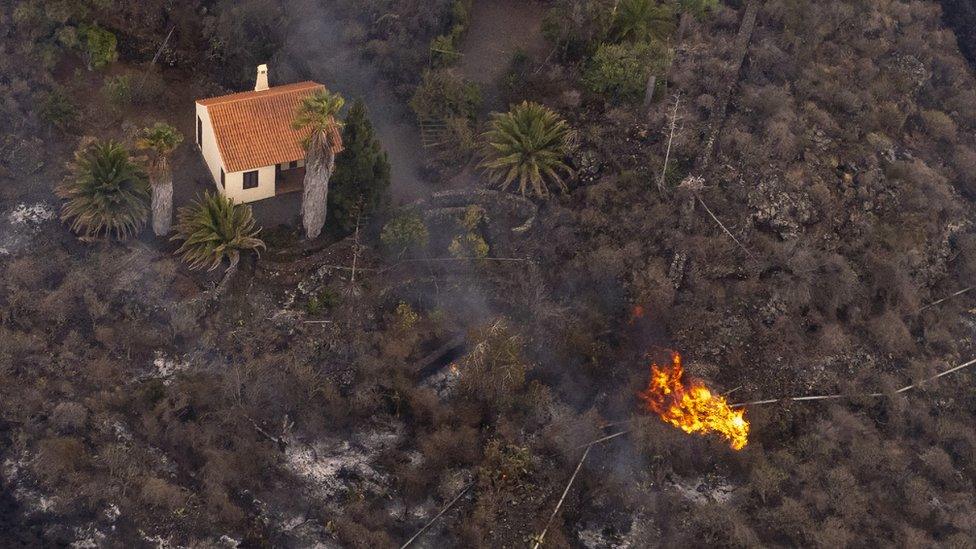
- Published21 September 2021
